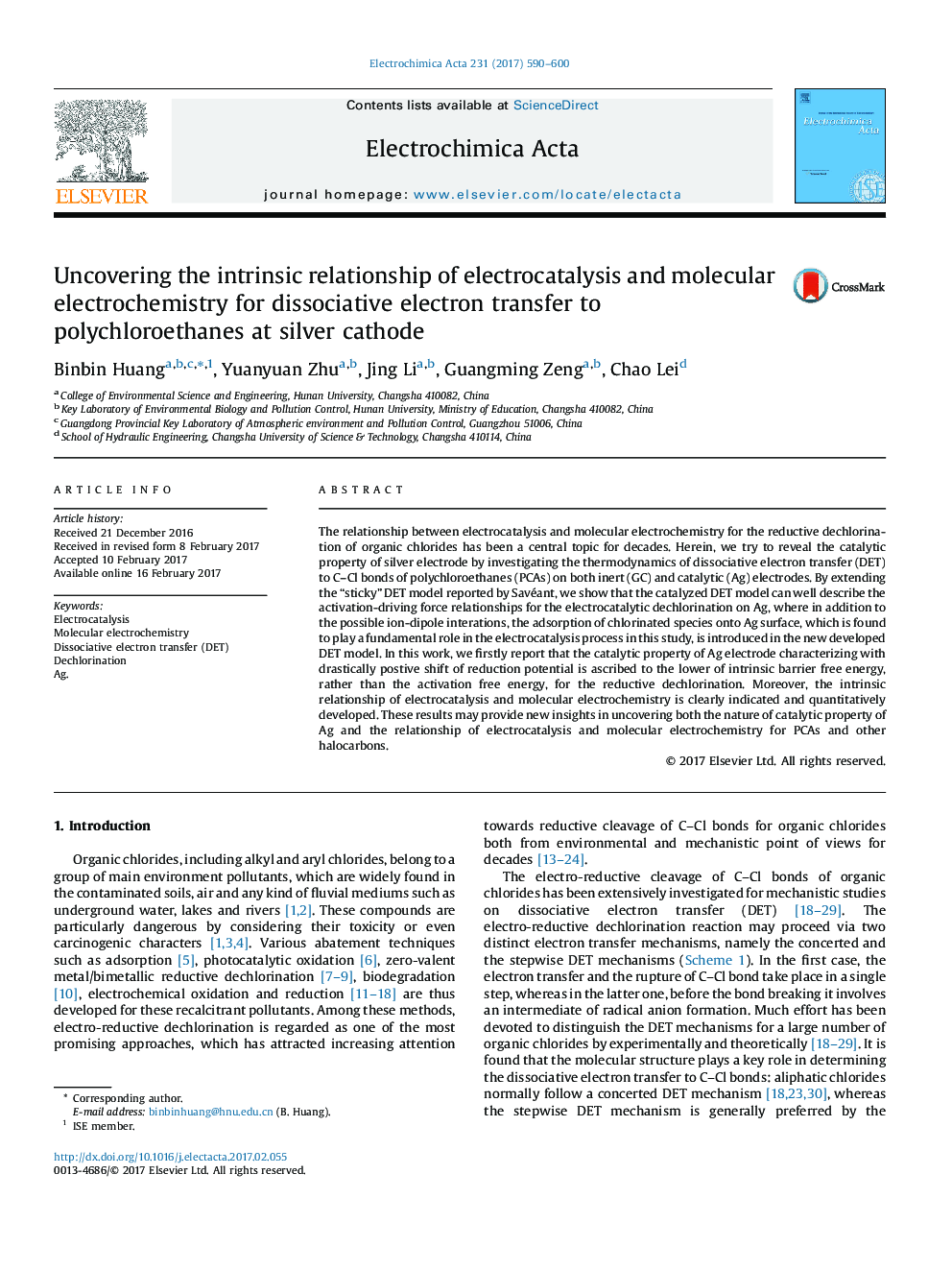| کد مقاله | کد نشریه | سال انتشار | مقاله انگلیسی | نسخه تمام متن |
|---|---|---|---|---|
| 6472096 | 1424126 | 2017 | 11 صفحه PDF | دانلود رایگان |
- Thermodynamics of dissociative electron transfer to C-Cl bonds at Ag are studied.
- The catalyzed dissociative electron transfer theory was proposed for the first time.
- The adsorption of organic chlorides onto Ag plays a key role for dechlorination.
- The catalytic property of Ag is ascribed to the lower of intrinsic barrier energy.
- The relationship of electrocatalysis and molecular electrochemistry is indicated.
The relationship between electrocatalysis and molecular electrochemistry for the reductive dechlorination of organic chlorides has been a central topic for decades. Herein, we try to reveal the catalytic property of silver electrode by investigating the thermodynamics of dissociative electron transfer (DET) to C-Cl bonds of polychloroethanes (PCAs) on both inert (GC) and catalytic (Ag) electrodes. By extending the “sticky” DET model reported by Savéant, we show that the catalyzed DET model can well describe the activation-driving force relationships for the electrocatalytic dechlorination on Ag, where in addition to the possible ion-dipole interations, the adsorption of chlorinated species onto Ag surface, which is found to play a fundamental role in the electrocatalysis process in this study, is introduced in the new developed DET model. In this work, we firstly report that the catalytic property of Ag electrode characterizing with drastically postive shift of reduction potential is ascribed to the lower of intrinsic barrier free energy, rather than the activation free energy, for the reductive dechlorination. Moreover, the intrinsic relationship of electrocatalysis and molecular electrochemistry is clearly indicated and quantitatively developed. These results may provide new insights in uncovering both the nature of catalytic property of Ag and the relationship of electrocatalysis and molecular electrochemistry for PCAs and other halocarbons.
Journal: Electrochimica Acta - Volume 231, 20 March 2017, Pages 590-600
